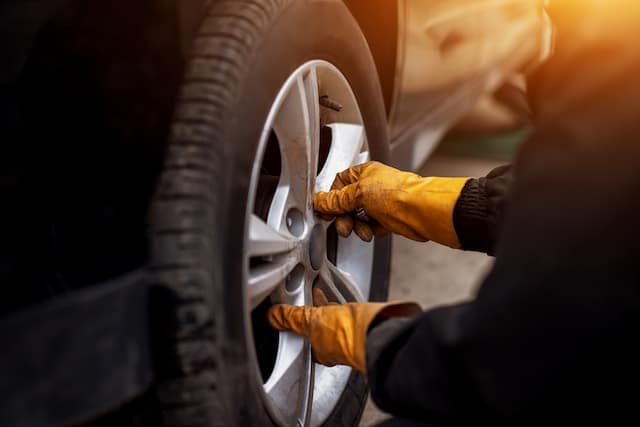
The escalating search for “Hard to find parts for auto” reflects the trials of a transforming industry that’s been severely impacted by several challenges. The confluence of a worldwide supply-chain crisis, a semiconductor chip shortage, and the ever-growing fleet of aging vehicles is complicating auto part availability. Additionally, price hikes for new and used vehicles, driven by a global pandemic, have compelled vehicle owners to hang on to their old cars longer, escalating the demand for car repairs. This article addresses these intricacies, the shifts in the auto industry, and provides pragmatic approaches to sourcing hard-to-find auto parts in this volatile market landscape.
Impact of Supply-Chain Issues and Chip Shortage
COVID-19 restrictions and a sweeping semiconductor chip shortage have played havoc with the global auto industry. The chip dearth alone is projected to have impeded the production of about 20 million new vehicles. Consequently, prices for new cars have inflated almost 30% over the past three years, indirectly fostering an increased demand for used car parts.
Limited Resources and Counterfeit Concerns
While the internet and dealerships have streamlined parts availability, they do not always have what you need. Junkyards and auto-recycling centers stock thousands of parts, yet the exact one you require might be elusive. Similarly, online databases and popular retailers often grapple with counterfeit parts, making it trickier to trust the authenticity of rare auto parts on sale.
Limited Accessibility of Newer, Advanced Auto Parts
Newer or advanced parts like adaptive headlights for high-end models are often predominantly available at branded car dealerships, implying fewer alternatives. Regulatory complexities and patent rights for such advanced technologies further deter the availability of aftermarket parts, especially safety-related components, for newer vehicles.
Discontinued Brands and Unpopular Models
Locating parts for discontinued brands or less-popular models poses additional challenges. Manufacturers often halt the production of replacement parts once a vehicle is out of warranty, making used parts for such vehicles harder to find.
Harnessing Technology and Community Power in the Quest for Hard-to-Find Auto Parts

In this digital age, technology can be a game-changer in the search for elusive auto parts. Various online platforms and communities exist, providing plentiful resources for both modern and vintage auto parts. Here, we’ll dive into how to best leverage these tools and networks, exploring all the possibilities available to find those hard-to-find auto parts.
Online Marketplaces and Auction Sites
Online marketplaces such as eBay and Amazon are known for their wide array of products, and auto parts are no exception. Users can often find both new and used parts, and the search functionality allows for easy navigation. Additionally, these platforms provide buyer protection policies, adding a level of security to your purchases.
Another option is online auction sites. Auction sites often have parts for classic cars or more unique models. Although the bidding process can be competitive, it’s worth exploring if you’re in search of rare parts.
Specialty Auto Parts Websites
In addition to general marketplaces, numerous specialized auto parts websites exist. Sites like Car-Part.com aggregate inventories from auto recyclers, junkyards, and salvage yards, making it easier to find used and refurbished parts. Moreover, they feature comprehensive databases, enabling users to search based on make, model, and part required.
Social Media Platforms
Don’t overlook the power of social media in your search. Platforms like Facebook and Instagram are not just for social networking; they’re also viable tools for locating auto parts. Many groups and pages are dedicated to specific car models or brands, where users buy, sell, and trade parts. On Instagram, you might find dealers or individuals selling auto parts through posts or stories.
Enthusiast Forums and Communities
Owners’ clubs, model-specific forums, and online car enthusiast communities can be invaluable in your search. These platforms are brimming with individuals who share the same passion for a particular model or brand. They offer a wealth of knowledge and resources and can sometimes lead you to local or regional sellers who have the parts you need.
A simple web search of your vehicle model followed by “enthusiast forum” can yield many results. Forums such as Reddit also have numerous car-specific subreddits where users frequently post about parts for sale or trade.
Auto Salvage and Junkyards
Don’t disregard the traditional route of auto salvage and junkyards. Many of these establishments have now digitized their inventories and put them online for easy searching. In addition, some have nationwide networks, allowing them to source parts from various locations if they don’t have them in stock.
3D Printing for Vintage Parts
For vintage car owners struggling to find parts, 3D printing could be the future. Although it’s still relatively niche in the auto industry, several companies offer 3D-printed car parts, especially for older models where parts production has ceased.
In conclusion, the search for hard-to-find auto parts doesn’t need to be daunting. By harnessing technology and leveraging the power of online communities, you can navigate through the seemingly complex maze with ease. Whether it’s a classic car part or a high-tech component, remember that the world is now more connected than ever before, increasing your chances of finding exactly what you need.
Hard To Find Parts For Auto: FAQs

Q: Why is it becoming increasingly hard to find auto parts?
A: A combination of factors such as global supply chain disruptions due to COVID-19, a worldwide semiconductor chip shortage, and the increasing age of vehicles on the road have all contributed to the difficulty in finding auto parts. Additionally, rising prices for new and used vehicles have prompted owners to keep their older vehicles for longer, driving up demand for auto parts.
Q: What challenges are there in finding auto parts online?
A: While online platforms do have an extensive range of parts, they may not always have the exact part you need. Furthermore, these platforms often grapple with issues of counterfeit parts, making it difficult to trust the authenticity of rare auto parts on sale.
Q: Where else can I find auto parts apart from online platforms and dealerships?
A: Apart from online platforms and dealerships, auto salvage and junkyards, and specific model enthusiast forums can be valuable resources for finding hard-to-find auto parts. For vintage cars, 3D printing is also emerging as a viable solution for sourcing hard-to-find parts.
Q: How can I leverage technology and community power to find auto parts?
A: You can use online marketplaces, specialty auto parts websites, social media platforms, and enthusiast forums to search for the parts you need. Joining communities of fellow car enthusiasts can also provide leads and valuable advice on where to find parts. For older vehicles, 3D printing can be an option for creating hard-to-find parts.
Q: What issues arise when finding parts for discontinued brands or less popular models?
A: Manufacturers often stop producing replacement parts once a vehicle is out of warranty. This makes it harder to find parts for discontinued brands or less popular models, as they might not be readily available in the market.
Q: Are there any potential risks when buying used auto parts?
A: Yes, while used parts can be cost-effective, there are potential risks. These can include purchasing counterfeit parts, parts that don’t fit, or parts that are in poor condition. It’s essential to buy from reputable sources and check the part’s condition before purchasing.
Q: What are some reliable online sources for buying auto parts?
A: Online marketplaces like Amazon and eBay, specialty auto parts websites like Car-Part.com, and social media platforms are often reliable sources for auto parts. However, always check seller reviews and ratings, and consider the site’s buyer protection policies.
Q: How do I identify counterfeit parts when buying online?
A: Identifying counterfeit parts can be challenging, but there are a few tips to consider. These include comparing the part’s price to the average market rate (if it’s too good to be true, it probably is), checking the quality of packaging and branding, and evaluating the seller’s reputation and reviews.
Q: Can I find parts for my classic car online?
A: Yes, classic car parts can often be found on online auction sites, specialty auto parts websites, and classic car enthusiast forums. Additionally, some companies offer 3D-printed parts for older models where parts production has ceased.
Q: How can 3D printing help in finding parts for older vehicles?
A: For older vehicles, particularly vintage models, manufacturers may no longer produce specific parts. In these cases, 3D printing can provide a solution. Several companies offer 3D-printed car parts, allowing for the creation of specific parts based on the original design specifications.
Q: What is the advantage of using enthusiast forums to find auto parts?
A: Enthusiast forums are communities where individuals share a passion for a particular car model or brand. Members often share a wealth of knowledge and resources and sometimes sell or trade parts. These forums can be invaluable for finding hard-to-get parts and receiving advice from fellow owners who have faced similar challenges.


